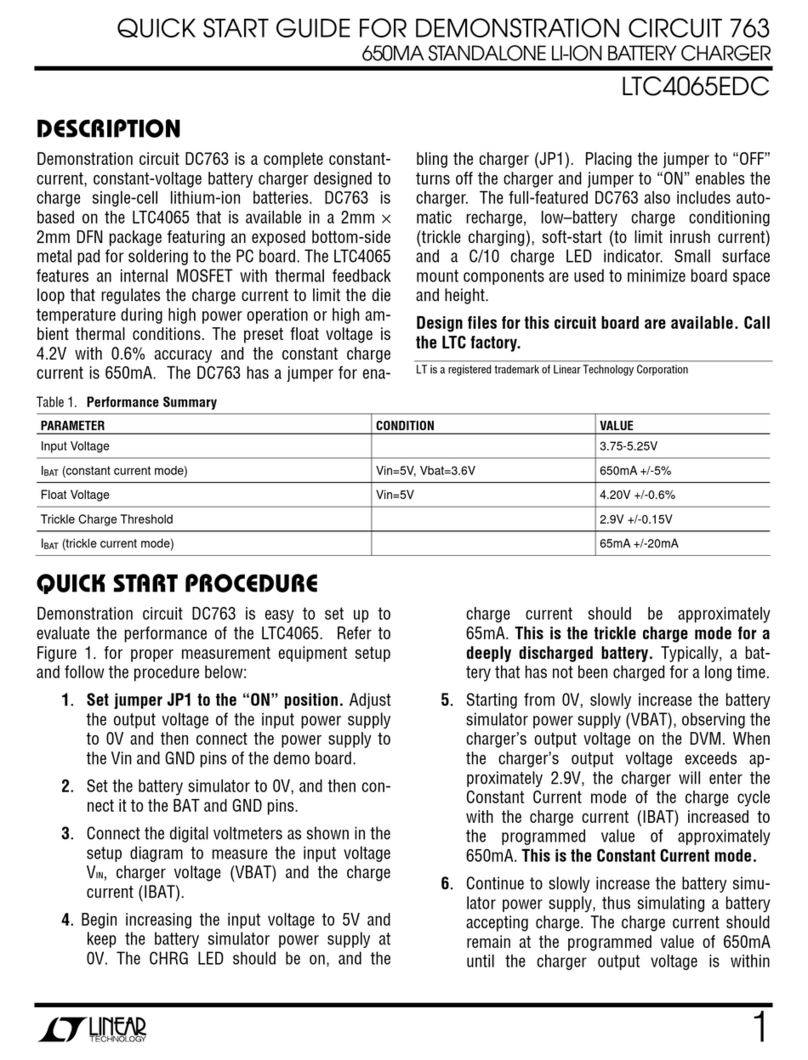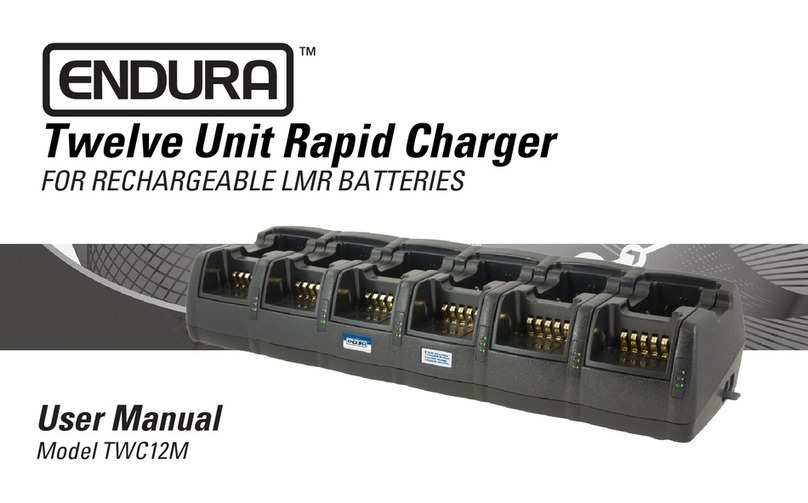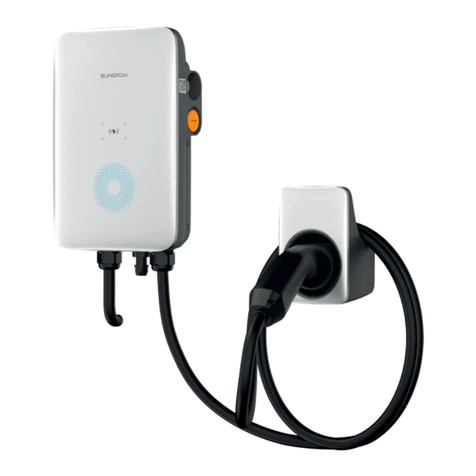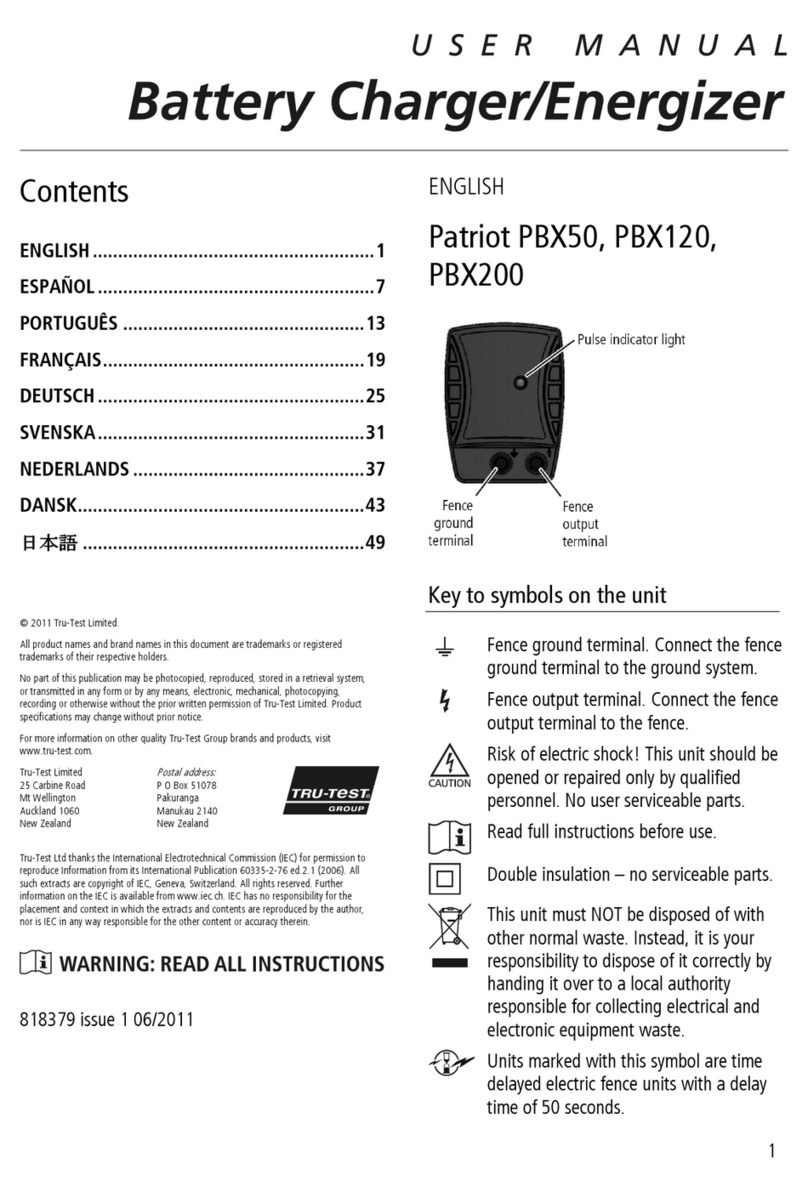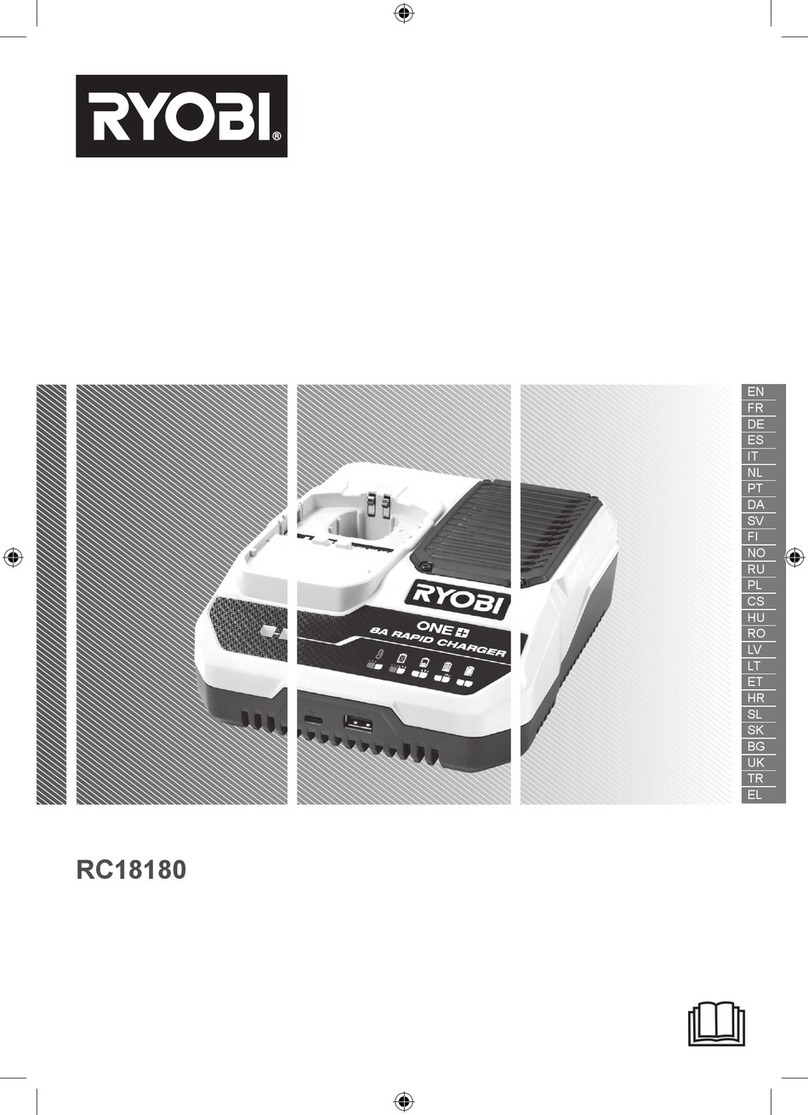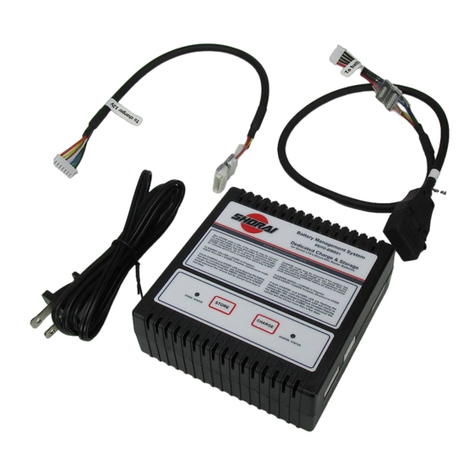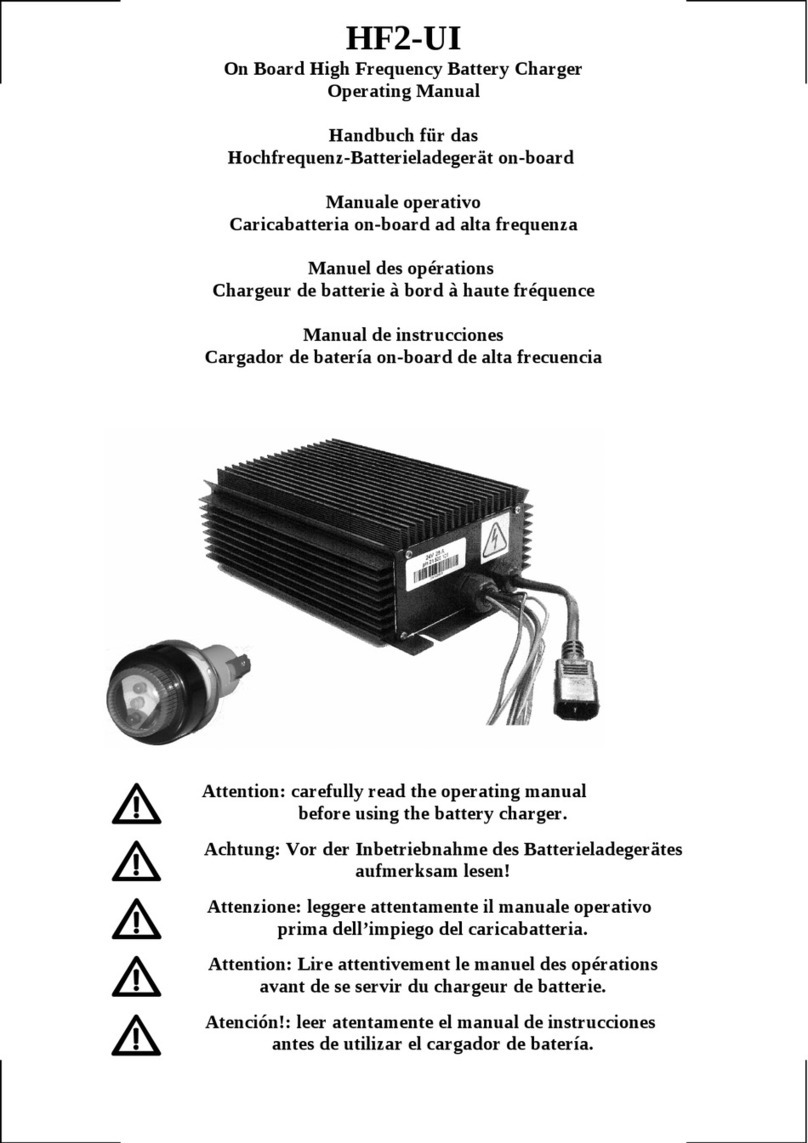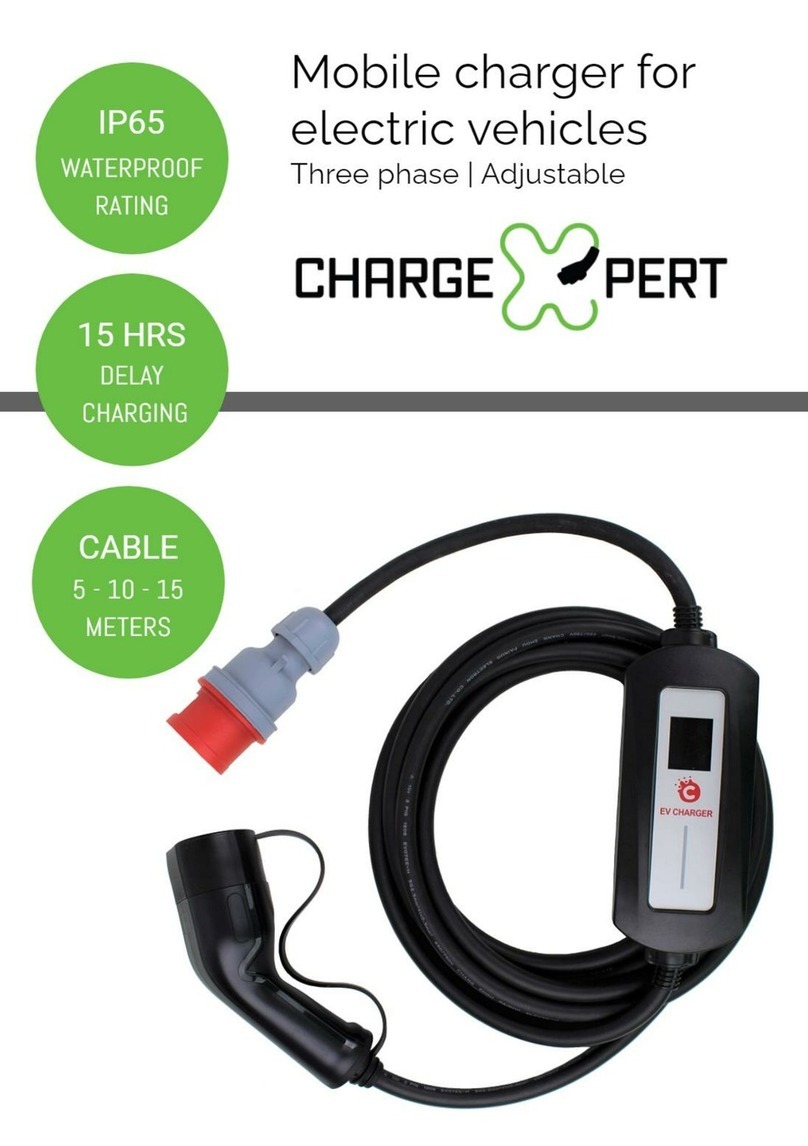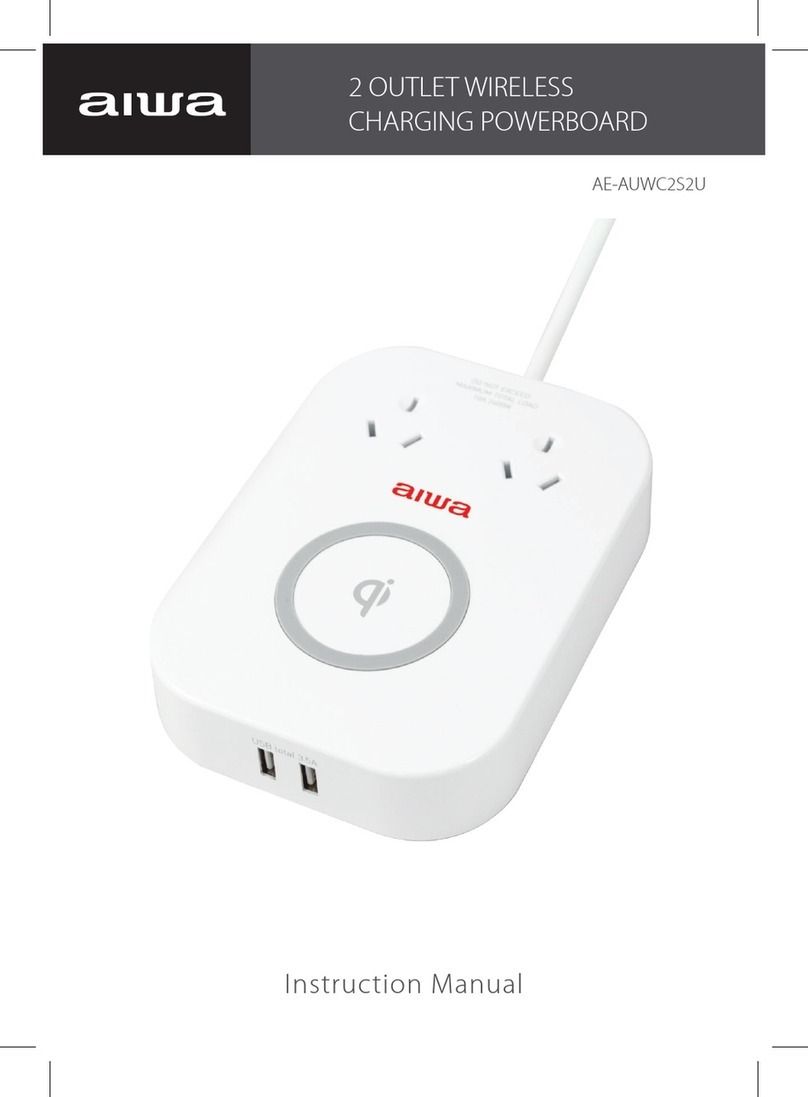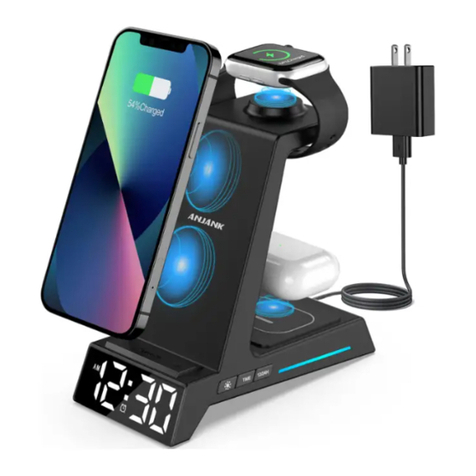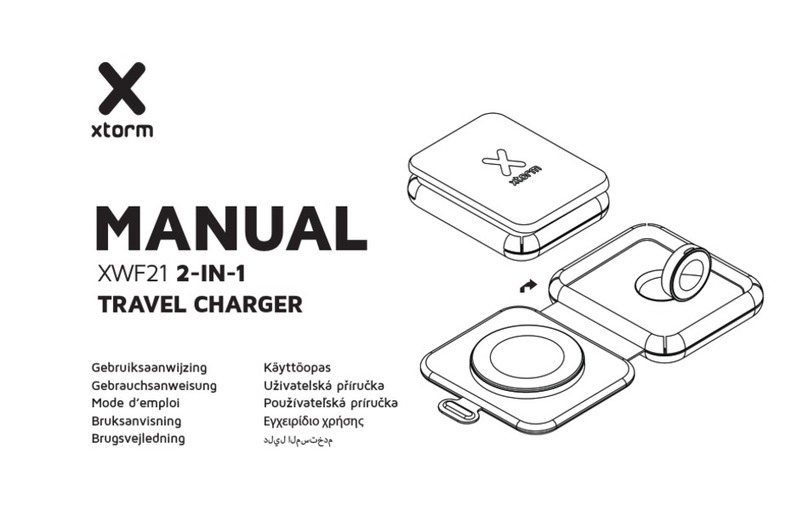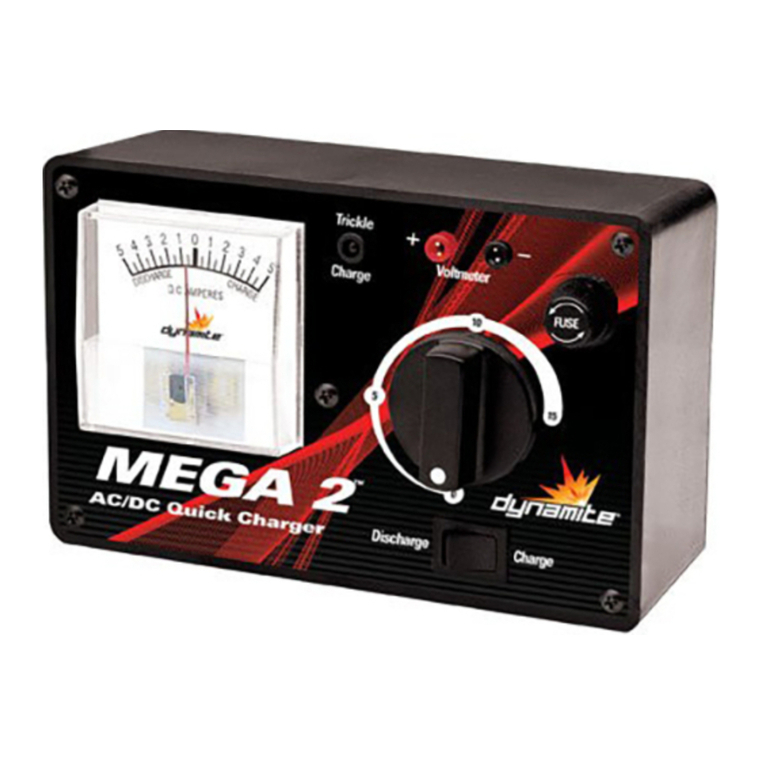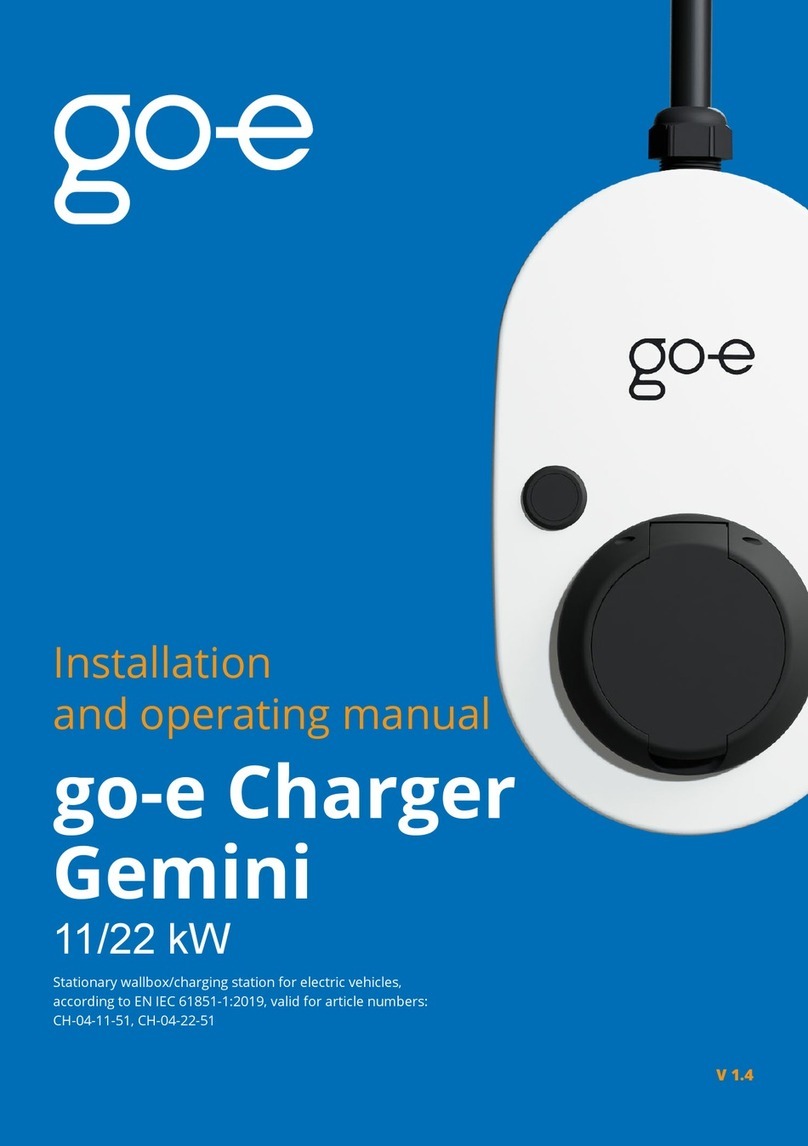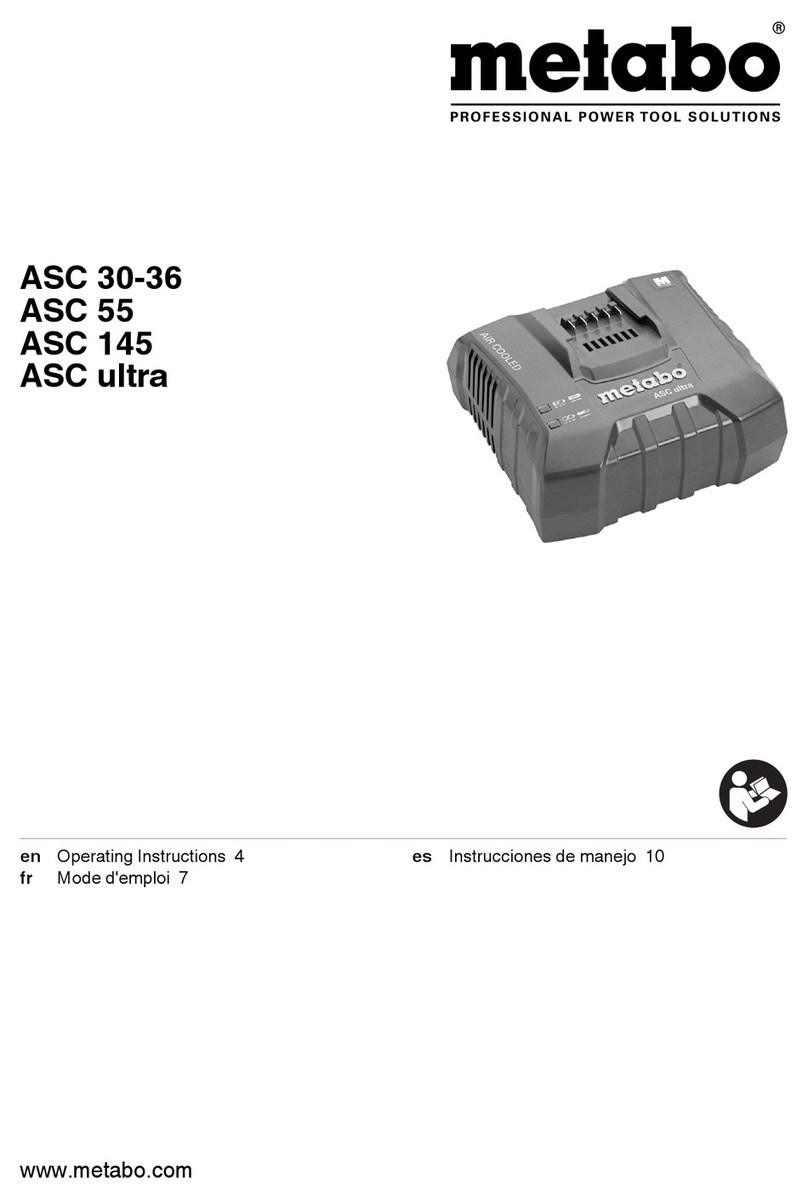Linear Technology DC086 Quick setup guide

1
DEMO MANUAL DC086
BATTERY CHARGER
LT1510 Constant-Voltage/
Constant-Current Lithium-Ion
Battery Charger
DESCRIPTIO
U
Demonstration board DC086 is a complete lithium-ion
battery charger designed for 1-, 2- or 3-cell applications
(otherrechargeablebatterytypescanalsobecharged,see
page three). The LT
®
1510 is used in a high efficiency
current mode step-down switching topology, capable of
providingup to 1.5A of charging current.This demo board
uses all surface mount components, resulting in a circuit
occupying approximately 1 square inch of board area with
less than 0.3 in. (7.6mm) height.
Jumpers J1 and J2, located on the demo board, are used
to select the correct charging voltage for the number of
cells being charged (4.2V, 8.4V or 12.6V). Charging cur-
rent is programmed for 1.3A by resistor R1.
The DC input voltage must be at least 3V greater than the
output voltage. When the input voltage is removed, an
external low current MOSFET (Q1) provides a disconnect
for the output voltage divider resistors and the chip goes
into a sleep mode, draining approximately 3µA from the
battery.
PARAMETER CONDITIONS LIMITS
V
IN
V
OUT
+ 3V ≤V
IN
≤28V*
Battery Voltage (V
BAT
)V
IN
= 10V 4.2 ±0.7%
When Charging Terminates V
IN
= 15V 8.4V ±0.7%
V
IN
= 20V 12.6V ±0.7%
Maximum Battery Charging Current 1.3A ±5%
PERFOR A CE SU ARY
UWWW
Charging Efficiency
BATTERY CHARGING CURRENT (A)
0.1
EFFICIENCY (%)
0.7
DM086 • TPC01
0.3 0.5 0.9
96
94
92
90
88
86
84
82
80 1.1 1.3 1.5
V
CC
= 15V
V
BAT
= 8.4V
Component Side Demo Board
Note: Good thermal PC board layout techniques are required when operating near maximum power levels to prevent excessive junction temperatures.
Note: For 0.5% battery-voltage accuracy, replace R3 to R8 with 0.1% resistors.
*For V
IN
> 25V, C1 should be replaced with a higher voltage rating capacitor.
TYPICAL PERFOR A CE CHARACTERISTICS A D BOARD PHOTO
UU
W
, LTC and LT are registered trademarks of Linear Technology Corporation.

2
DEMO MANUAL DC086
BATTERY CHARGER
LT1510CS
FOUR CORNER PINS ARE FUSED TO
INTERNAL DIE ATTACH PADDLE FOR
HEAT SINKING TO PC BOARD
USE GENEROUS AMOUNTS OF PC BOARD
COPPER AROUND LEADS (SEE LT1510
DATA SHEET AND DESIGN NOTE 124)
PACKAGE A D SCHE ATIC DIAGRA S
UWW
1
2
3
4
5
6
7
8
16
15
14
13
12
11
10
9
GND
SW
BOOST
GND
OVP
SENSE
GND
GND
GND
V
CC
V
CC
PROG
V
C
BAT
GND
GND
LT1510
D2
MBRS140L
D1
MBRS140L
J4
V
IN
J3
GND
C1
10µF
R9
1k
C5
0.1µF
R2
300ΩR1
3.83k
0.25%
C3
1µF
16V
C4
22µF
+
Li-Ion
BATTERY
J6
J5
Q1
2N7002 V
IN
C2
0.22µF
D3
MMBD914
L1
CTX33-2
33µH
1, 4
2, 3
R4
3.52k
0.25%
R3
4.99k
0.25%
R5
4.99k
0.25%
R6
3.52k
0.25%
R7
4.99k
0.25%
R8
3.52k
0.25%
J1 J2
I
BAT
V
BAT
BATTERY
J1 J2 VOLTAGE
CLOSED CLOSED 4.2V
CLOSED OPEN 8.4V
OPEN OPEN 12.6V
PROGRAM OUTPUT VOLTAGE
DM086 • SCHEMATIC
+
TOP VIEW
S PACKAGE
16-LEAD PLASTIC SO
1
2
3
4
5
6
7
8
16
15
14
13
12
11
10
9
GND
SW
BOOST
GND
OVP
SENSE
GND
GND
GND
V
CC2
V
CC1
PROG
V
C
BAT
GND
GND
Figure 1. Demo Board Schematic
PARTS LIST
REFERENCE
DESIGNATOR QUANTITY PART NUMBER DESCRIPTION VENDOR TELEPHONE
1E106ZY5U-C304F-T Tokin (408) 432-8020
C1 1 THCS50EIE106Z 10µF 25V 20% Y5U Ceramic Capacitor United Chemicon/Marcon (708) 696-2000
C2 1 12063C224MAT2A 0.22µF 25V 20% X7R Ceramic Capacitor AVX (207) 282-5111
C3 1 1206YG105ZAT2A 1µF 16V Y5V Ceramic Capacitor AVX (207) 282-5111
C4 1 TPSD226M025R0200 22µF 25V 20% Tantalum Capacitor AVX (207) 282-5111
C5 1 12065C104MAT2A 0.1µF 50V 20% X7R Ceramic Capacitor AVX (207) 282-5111
D1, D2 2 MBRS140LT3 1A 40V Schottky Diode Motorola (602) 244-3550
D3 1 MMBD914LT1 100V Silicon Diode Motorola (602) 244-3550
J1, J2 2 TSW-102-07-G-S 0.1"cc, 0.025"sq. 2-Pin Jumper Samtech (800) 726-8329
J3 to J6 4 1502-2 0.090" Turret Terminal Keystone (718) 956-8900
L1 1 CTX33-2 33µH 2A SMT Inductor Coiltronics (407) 241-7876
Q1 1 2N7002 N-Channel MOSFET Transistor Siliconix (800) 554-5565
R1 1 CR1206F3K83CT 3.83k 1/4W 0.25% Chip Resistor IRC (512) 992-7900
R2 1 CR32-301J-T 300Ω1/8W 5% Chip Resistor AVX (207) 282-5111
R3, R5, R7 3 CR1206F4K99CT 4.99k 1/4W 0.25% Chip Resistor IRC (512) 992-7900
R4, R6, R8 3 CR1206F3K52CT 3.52k 1/4W 0.25% Chip Resistor IRC (512) 992-7900
R9 1 CR32-102J-T 1k 1/8W 5% Chip Resistor AVX (207) 282-5111
U1 1 LT1510CS SO-16 Battery Charger IC LTC (408) 432-1900

3
DEMO MANUAL DC086
BATTERY CHARGER
OPERATIO
U
lead-acid batteries, reprogram the OVP (overvoltage pro-
tection) feedback resistor divider for the correct battery
charging voltage using the following formula:
RR
V
V
FOUT
REF
=
3
1–
where R
F
= total resistance between OVP pin and BAT pin,
V
REF
= 2.465V, select R3 = 4.99k, 1% or less.
Maximum charging current (up to 1.5A) is programmed
by R1 using the following formula:
RICHARGE
12000 2 465
=
()( )
.
where 2.465V = reference voltage present at PROG pin.
The maximum charging current (or current limit) is 2000
times the current out of the PROG pin. This current has both
AC and DC components present; therefore, to provide high
DCaccuracy,averagingcomponentsR2andC3arerequired.
For nickel-cadmium and nickel-metal-hydride batteries,
the normal charging method is constant current. Fast
charging requires some method to detect full charge and
terminate the high charge current. Some methods often
used to indicate full charge include battery temperature
riseandobservingbatteryvoltageprofileduringcharging.
LT1510 Step-Down Switching Regulator
The LT1510 is designed for constant-voltage and/or con-
stant-current operation with a 0.5% voltage accuracy and
a5%currentaccuracy. Anexternalresistorvoltagedivider
programs the output voltage, while a single resistor (or a
programming current from a DAC) sets the maximum
charging current .
An internal 2A NPN switch operating at 200kHz provides
high efficiency with low inductor values using a minimum
number of external components. The charging current
sense resistor is included on the die and can be wired for
sensing charging current at either the positive or negative
side of the battery.
Refer to the LT1510 data sheet for complete product
specifications and design notes DN111 and DN124 for
additional application information.
The DC086 demonstration board is intended for evaluat-
ing the LT1510 switching regulator battery charger IC.
Solder terminals are provided for easy hookup to a power
supply and to a lithium-ion battery to be charged. The
correct charging voltage for either 1, 2 or 3 cells is
selectable by a combination of jumpers (J1 and J2) on the
board.Seetheschematicdiagramforjumperinformation.
Current limit is set for 1.29A by resistor R1.
With a suitable input power supply and a discharged
battery connected to the demo board, the battery will
begin charging at the programmed current limit of 1.29A.
As the battery charges, the voltage rises and approaches
the program voltage of either 4.2V, 8.4V or 12.6V. The
charger will then maintain a constant voltage across the
battery, with the charging current decreasing to zero over
time as the battery reaches a fully charged condition.
The IC goes into a sleep mode when the input voltage is
removed.Inthesleepmode,thedrainfromthebatterydue
to the LT1510 is approximately 3µA. An additional source
of battery drain is due to the leakage current of Schottky
diode D1. Selecting a low leakage Schottky diode such as
a Motorola MBRD340 or a low leakage 3A silicon diode
can minimize this current drain.
Some lithium-ion battery manufacturers recommend ter-
minating the constant-voltage float mode after the charge
currenthas droppedbelowa specificlevel(typically 50mA
to 100mA) and a specific amount of time has elapsed
(typically from 30 to 90 minutes). This may extend the life
of the battery, but check with the manufacturer of the
battery you are using for details. Included on the board is
an area for breadboarding a timing circuit.
Other Battery Types
Although the demo board was designed for charging
Li-Ion batteries, simple modifications will allow other
battery types to be charged.
Sealed lead-acid batteries are charged using a current-
limited constant voltage. Over a 0°C to 40°C temperature
range, a charge voltage of 2.35V/cell can be used with no
chargetermination needed. The maximum chargecurrent
is determined by the battery manufacturer and is typically
0.25Cor less. To use the demo board for charging sealed
Information furnished by Linear Technology Corporation is believed to be accurate and reliable.
However, no responsibility is assumed for its use. Linear Technology Corporation makes no represen-
tationthatthe interconnectionofits circuitsasdescribed hereinwillnot infringeonexisting patentrights.
Note: Cis the capacity rating of the battery in Ampere-Hours.

4
DEMO MANUAL DC086
BATTERY CHARGER
Linear Technology Corporation
1630 McCarthy Blvd., Milpitas, CA 95035-7417
(408) 432-1900
●
FAX
: (408) 434-0507
●
TELEX
: 499-3977
LT/GP 0696 500 • PRINTED IN USA
LINEAR TECHNOLOGY CORPORATION 1996
PCB LAYOUT AUD FILW
WU
Component Side Silkscreen Component Side
Component Side Solder Mask Solder Side
PC FAB DRAWI G
U
2.000
3.000
0.150
0.150
F
F
E
E
E
E
B
C
DD DD
DC086 • PC DWG
SYMBOL
NONE
B
C
D
E
F
DIAMETER
0.010
0.015
0.035
0.040
0.095
0.070
NUMBER
OF HOLES
10
17
80
4
4
2
117
TOTAL HOLES
NOTES:
1.BOARD MATERIAL IS FR-4, 0.062" THICK,
2 0Z COPPER
2.PCB WILL BE DOUBLE-SIDED
WITH PLATED THROUGH HOLES
3.SOLDER MASK BOTH SIDES WITH PC4014.
SILKSCREEN COMPONENT SIDE. USE
WHITE NONCONDUCTIVE INK
4.ALL DIMENSIONS IN INCHES ±0.005"
Table of contents
Other Linear Technology Batteries Charger manuals
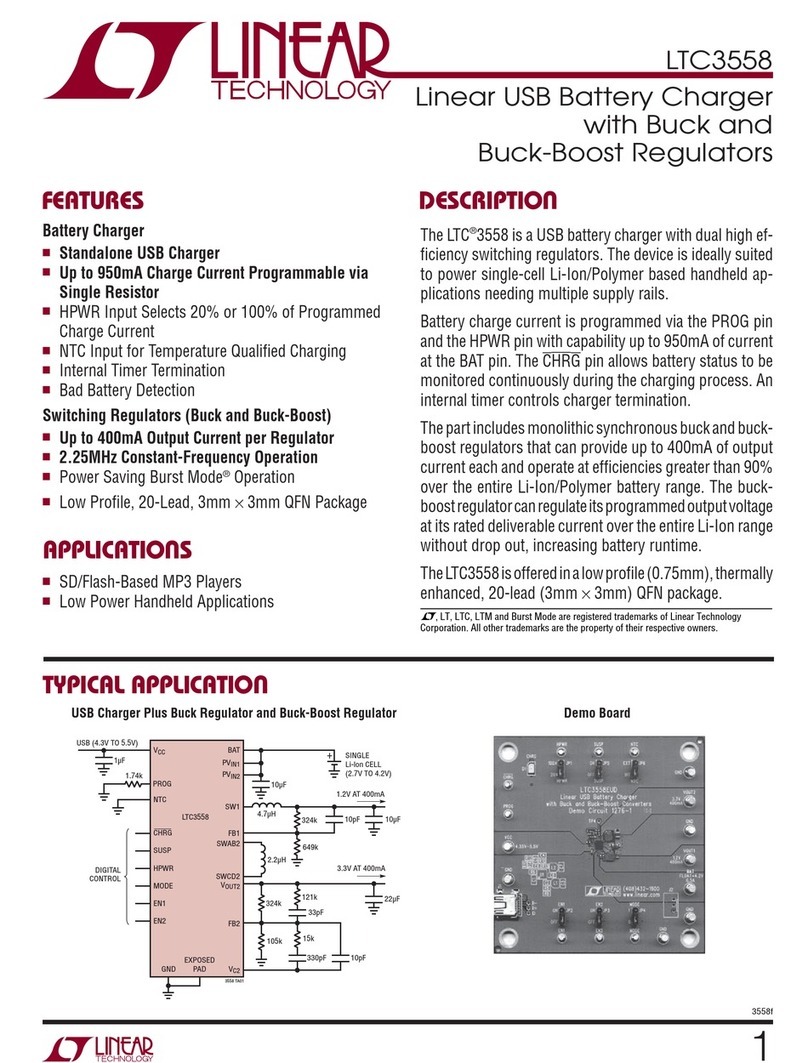
Linear Technology
Linear Technology LTC3558 User manual

Linear Technology
Linear Technology LTC1760 User manual
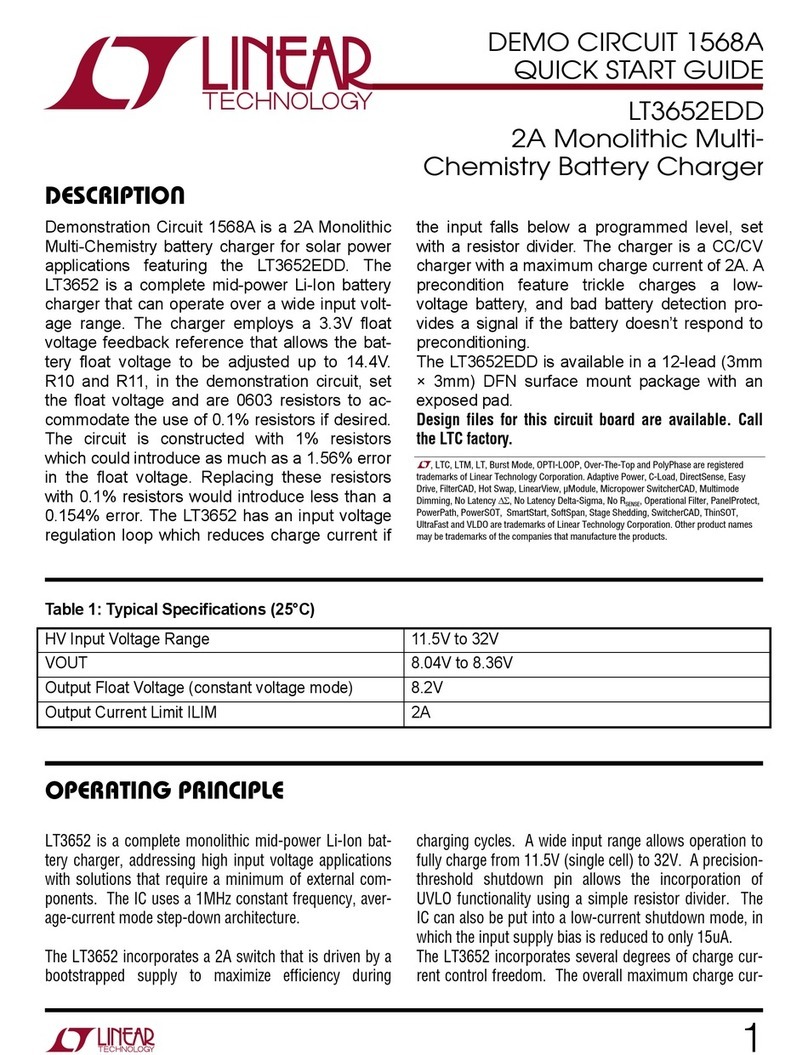
Linear Technology
Linear Technology LT3652EDD User manual
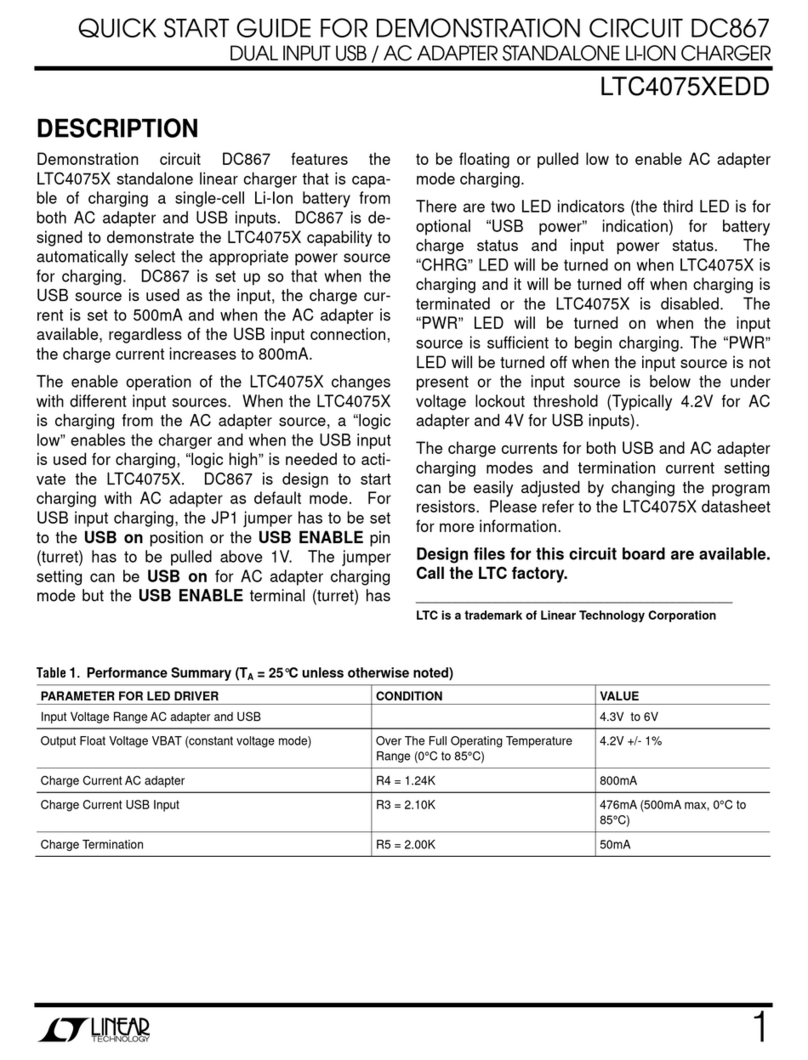
Linear Technology
Linear Technology LTC4075XEDD User manual
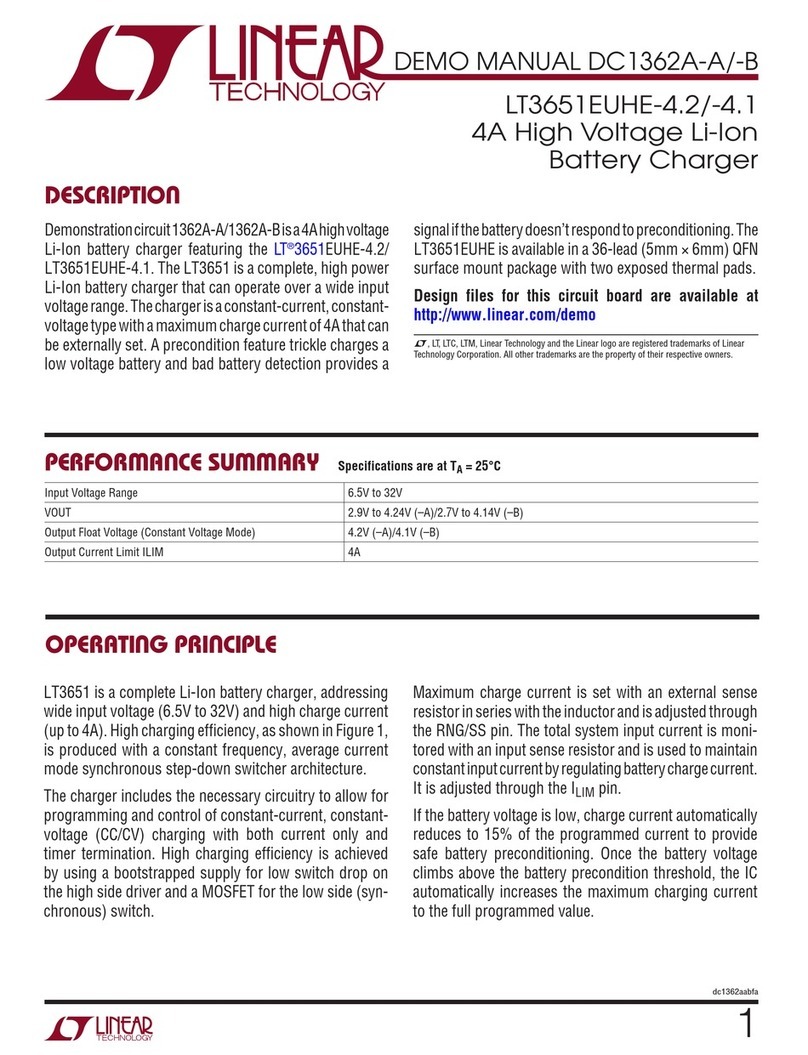
Linear Technology
Linear Technology LT3651EUHE-4.1 Quick setup guide
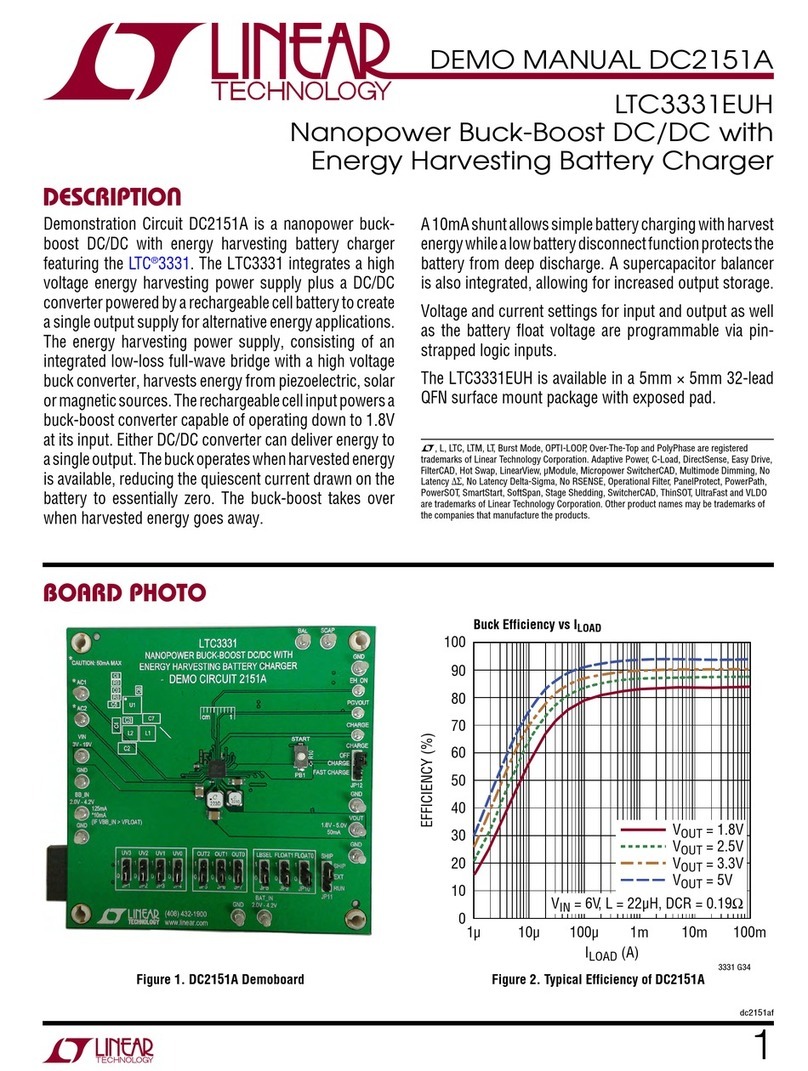
Linear Technology
Linear Technology DC2151A Quick setup guide

Linear Technology
Linear Technology DC1614A Quick setup guide

Linear Technology
Linear Technology DC1229B User manual
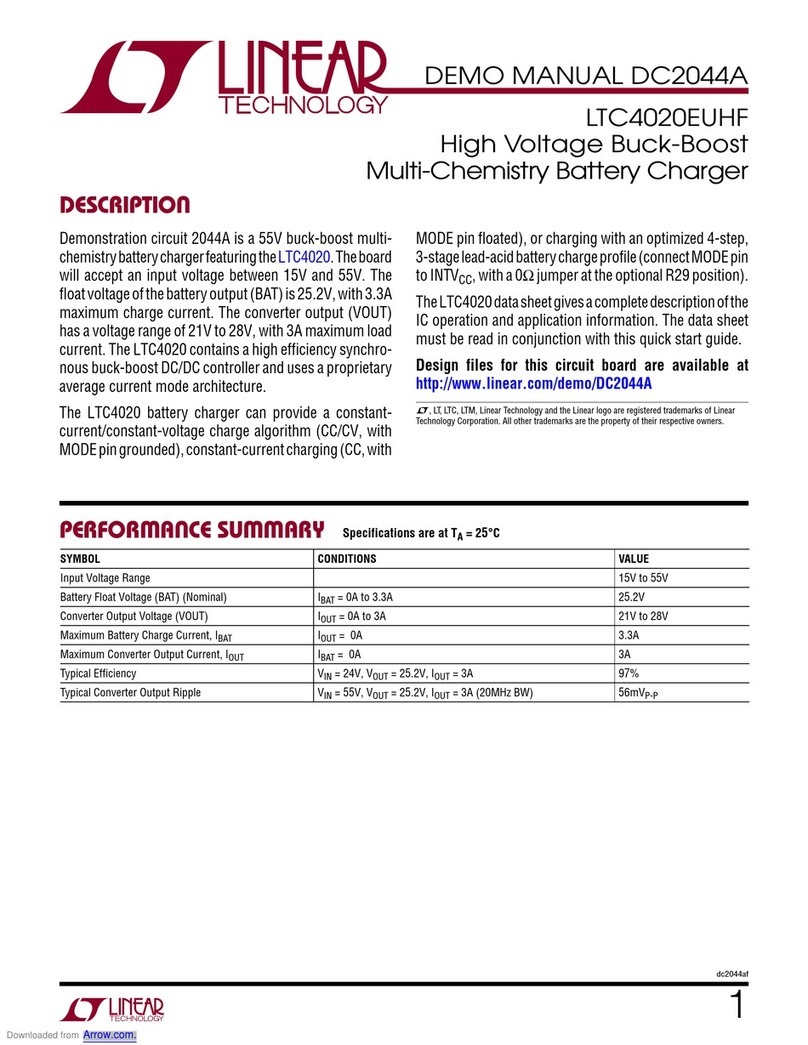
Linear Technology
Linear Technology LTC4020EUHF Quick setup guide
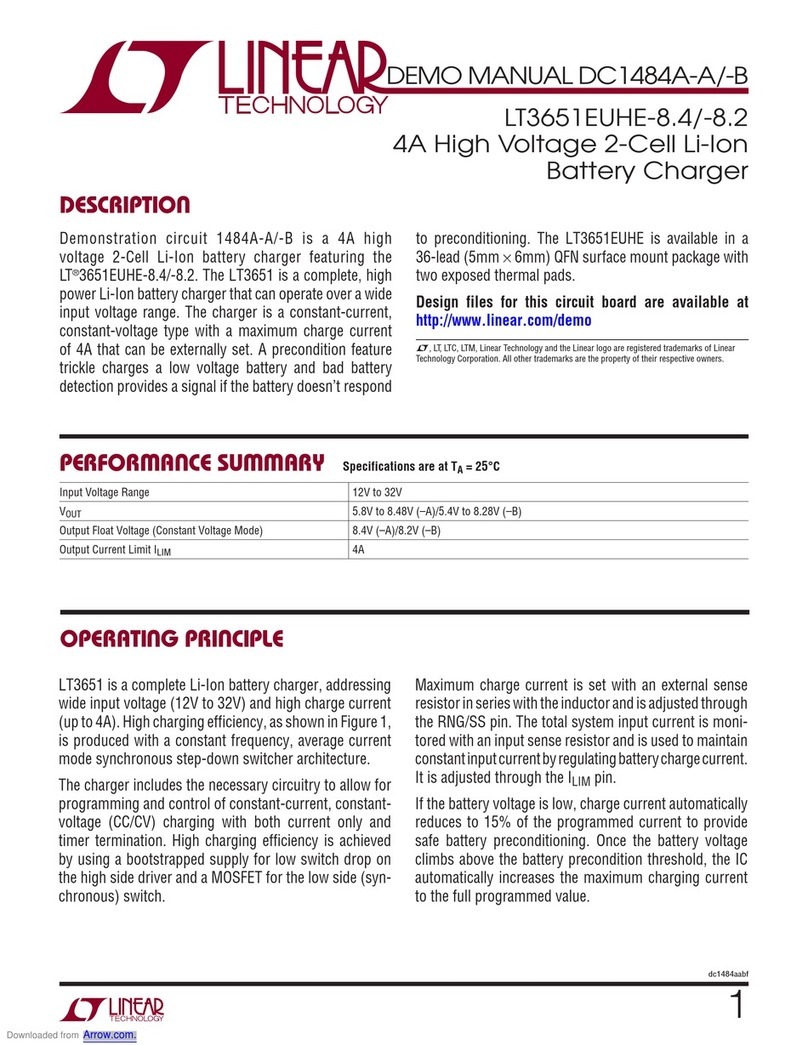
Linear Technology
Linear Technology DC1484A-A User manual
